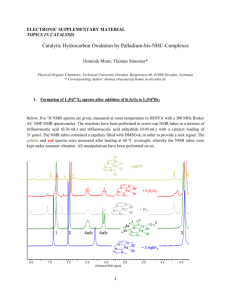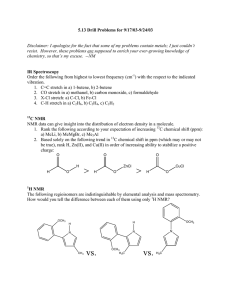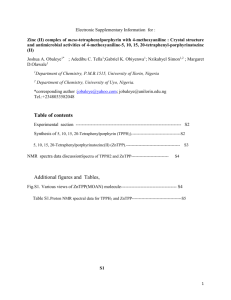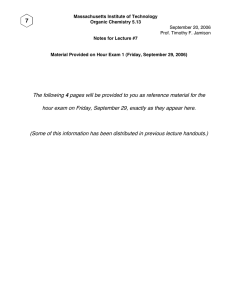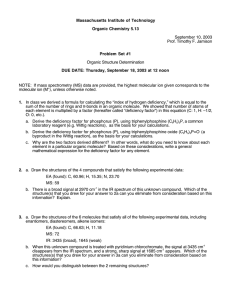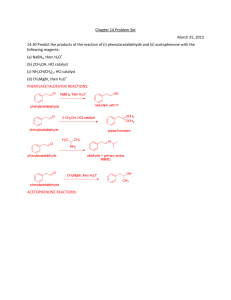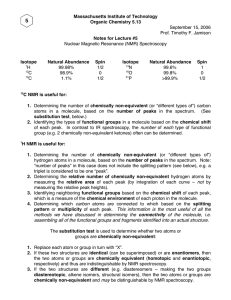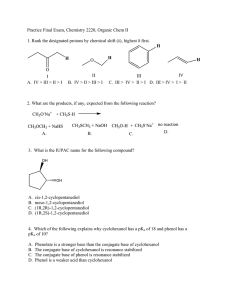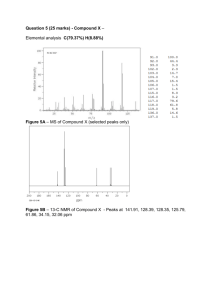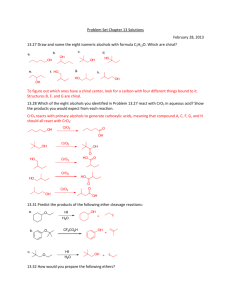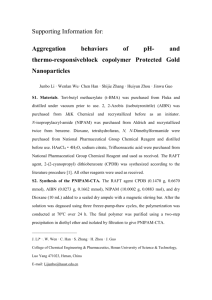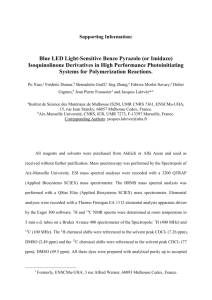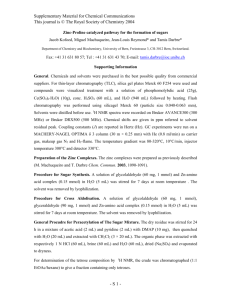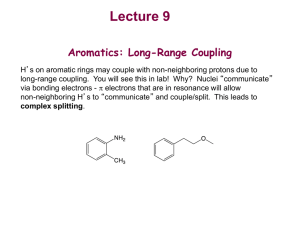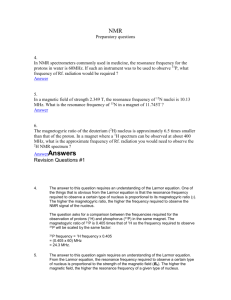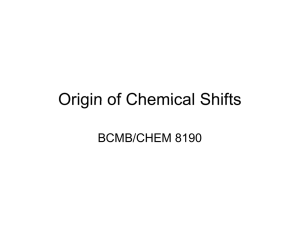Determining hydrogen-bond strengths in the solid state by NMR: the
advertisement
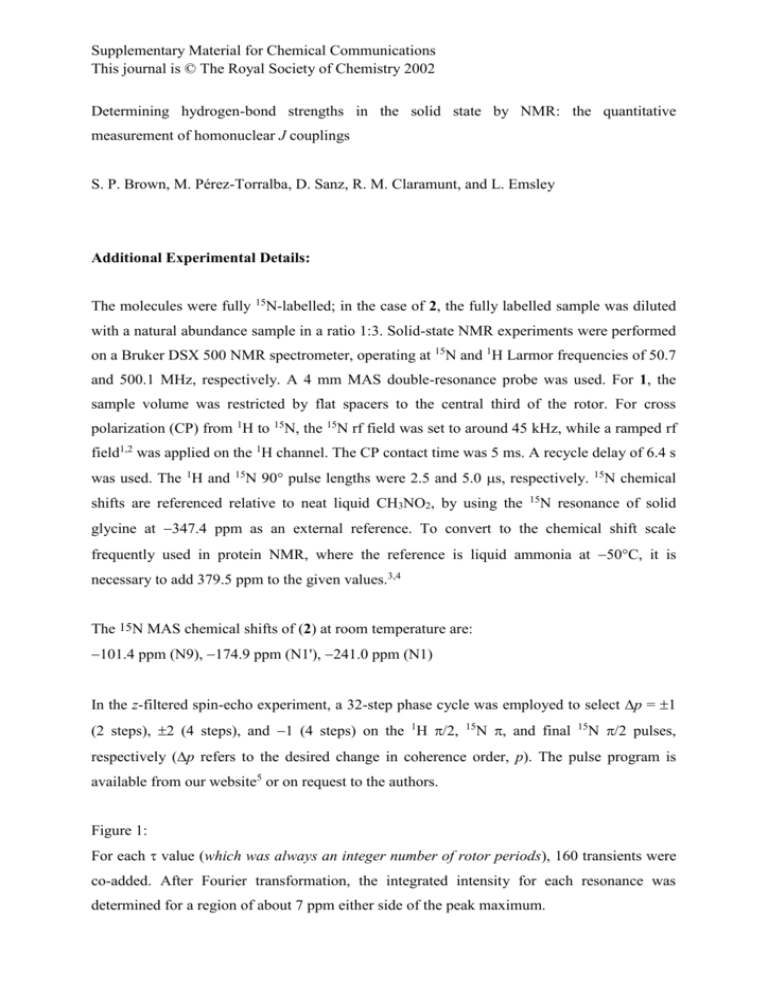
Supplementary Material for Chemical Communications This journal is © The Royal Society of Chemistry 2002 Determining hydrogen-bond strengths in the solid state by NMR: the quantitative measurement of homonuclear J couplings S. P. Brown, M. Pérez-Torralba, D. Sanz, R. M. Claramunt, and L. Emsley Additional Experimental Details: The molecules were fully 15N-labelled; in the case of 2, the fully labelled sample was diluted with a natural abundance sample in a ratio 1:3. Solid-state NMR experiments were performed on a Bruker DSX 500 NMR spectrometer, operating at 15N and 1H Larmor frequencies of 50.7 and 500.1 MHz, respectively. A 4 mm MAS double-resonance probe was used. For 1, the sample volume was restricted by flat spacers to the central third of the rotor. For cross polarization (CP) from 1H to 15N, the 15N rf field was set to around 45 kHz, while a ramped rf field1,2 was applied on the 1H channel. The CP contact time was 5 ms. A recycle delay of 6.4 s was used. The 1H and 15 N 90 pulse lengths were 2.5 and 5.0 s, respectively. shifts are referenced relative to neat liquid CH3NO2, by using the 15 15 N chemical N resonance of solid glycine at 347.4 ppm as an external reference. To convert to the chemical shift scale frequently used in protein NMR, where the reference is liquid ammonia at 50C, it is necessary to add 379.5 ppm to the given values.3,4 The 15N MAS chemical shifts of (2) at room temperature are: 101.4 ppm (N9), 174.9 ppm (N1'), 241.0 ppm (N1) In the z-filtered spin-echo experiment, a 32-step phase cycle was employed to select p = 1 (2 steps), 2 (4 steps), and 1 (4 steps) on the 1H /2, 15 N , and final 15 N /2 pulses, respectively (p refers to the desired change in coherence order, p). The pulse program is available from our website5 or on request to the authors. Figure 1: For each value (which was always an integer number of rotor periods), 160 transients were co-added. After Fourier transformation, the integrated intensity for each resonance was determined for a region of about 7 ppm either side of the peak maximum. Supplementary Material for Chemical Communications This journal is © The Royal Society of Chemistry 2002 Figure 2: The t1/2 increment equalled 2.0 ms (24 R) with 160 transients being co-added for each of 26 t1 values. The necessary truncation of the t1 FID leads to sinc wiggles in the F1 dimension. Sign discrimination is obtained in the F1 dimension using the States method6 – the phase of the first 90 pulse of the z-filter is incremented by 90. The F1 spectral width was therefore 250 Hz. The bottom contour corresponds to 24 % of the maximum signal. 1 2 3 4 5 6 G. Metz, X. L. Wu, and S. O. Smith, J. Magn. Reson. Ser. A, 1994, 110, 219. S. Hediger, B. H. Meier, N. D. Kurur, G. Bodenhausen, and R. R. Ernst, Chem. Phys. Lett., 1994, 223, 283. A. McDermott and Z. Gu, in 'Encyclopedia of Nuclear Magnetic Resonance', ed. D. M. Grant and R. K. Harris, Chichester, 1996, Vol. 2, p. 1137. J. Mason, in 'Encyclopedia of Nuclear Magnetic Resonance', ed. D. M. Grant and R. K. Harris, Chichester, 1996, Vol. 5, p. 3222. http://www.ens-lyon.fr/STIM/NMR D. J. States, R. A. Haberkorn, and D. J. Ruben, J. Magn. Reson., 1982, 48, 286.


